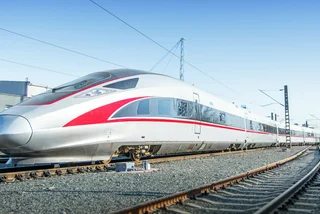The Czech Railway Administration has announced that the promised increase in speed on Czechia's main train lines will not go ahead as expected in January 2025. This means that trains will remain at a maximum speed of 160 kilometers per hour (km/h), rather than the previously pledged 200 km/h.
First focusing on EU-wide controls
The delay is due to the prioritizing the implementation of the European Train Control System (ETCS) on selected parts of the national railway system, which will gradually replace national security guards and allow for higher speeds.
According to SŽ spokeswoman Nela Eberl Friebová, the new focus will shift from starting ETCS operation rather than increasing speeds above the current maximum of 160 km/h. The SŽ assures that the implementation of ETCS will ultimately benefit both freight and passenger trains, as it will enable a unified train-control system – and higher speeds in the future.
Focusing on the ETCS is, after all, important to Czechia: the country has recently seen multiple large-scale train crashes, such as a June head-on collision in Pardubice that killed four and injured 27.
Higher speeds to debut in south, west of country
The first sections to allow for speeds of 200 km/h are expected on the route between Prague and České Budějovice. To demonstrate the potential of this higher speed, the Railway Administration plans to use a Pendolino train from Czech Railways on selected sections of this route.
"In June, we tested these sections with the Pendolino equipped with measuring technology from DB Systemtechnik [German technology]. The results will also be used for noise measurements," said the SŽ.
The first such arm will be the modernized line between Brno and Přerov, which is about 90 kilometers long, or the modernized connection between Pilsen and the town of Domažlice. Work is expected to be completed by the end of this decade, though this can easily vary.
Current structural issues
Although only the Pendolino will be able to reach 200 km/h due to its design, other trains in the fleet of domestic carriers are technically capable of handling this speed. However, current rail infrastructure is still inadequate, with the necessary upgrades and changes taking longer than expected.
According to experts, the problems with Czech rail lines at present are the insufficient radii of the arcs on the tracks. This, combined with the need for sufficient space for starting and braking, limits speed potential.
While the delay in implementing higher speeds may disappoint passengers, the Railway Administration assures that once more comprehensive railway sections are opened, there will be a noticeable reduction in journey times – as well as increased safety.












 Reading time: 2 minutes
Reading time: 2 minutes 























